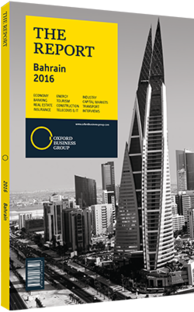Najla M Al Shirawi, CEO, Securities & Investment Company, on the impact of low oil prices on the GCC’s capital markets: Viewpoint

The new era of lower oil prices is having considerable repercussions on the GCC’s capital markets. Both equity and debt capital markets are undergoing challenging times affected by a changing macroeconomic environment and the increasing risk averseness of market participants. In the equities space, corporate earnings have already started seeing the impact of low oil prices in the first nine months of 2015, declining by about 8% year-on-year. Furthermore, analysts are lowering their earnings forecasts as they factor in medium-term sustenance of low oil prices, and its subsequent negative impact on the fundamentals and earnings of the listed companies. Not surprisingly, the S&P GCC Total Return Index declined 15% in 2015 led by double-digit declines across markets, with the exception of Abu Dhabi, which declined about 5% during the period. Not only have the markets performed poorly; the trading activity in the region has declined to only a fraction of the levels that were seen in 2014.
Such challenging times make it pertinent for investors to make informed and sound investment decisions and to also time them well. In every crisis and sell-off there are opportunities that one can capitalise on. Segments such as banking, petrochemicals, cement, construction and real estate will likely have a more direct and visible earnings impact from factors such as falling product prices, declining loan growth, public deposit outflow, higher defaults and lower government expenditure. Relatively more resilient sectors such as transport, logistics, telecoms, consumer goods and health care have also taken a considerable beating in the broad market sell-off and may offer some interesting investment options.
On the primary market front, the flow of GCC initial public offerings (IPOs) have practically dried up, especially after June 2015, when oil prices started declining again after a slight rebound in Q2 of 2015. There was only one IPO across the GCC in the second half of 2015 and the current pipeline also looks minimal, considering limited investor appetite and low liquidity. Looking forward to 2016, any IPOs, when they happen, need to be priced attractively leaving sufficient room upside for primary investors.
Debt markets, on the other hand, have been unusually active and now have their fair share of challenges. The current liquidity squeeze has compelled GCC governments, quasi-government institutions, financial institutions and regional corporations to raise money through debt markets. As hydrocarbons remain the single most important revenue source for GCC governments, expect those governments to borrow, draw down their reserves and pull out their deposits to fund the gap being created by lower oil prices.
According to Zawya, as of mid-December 2015, there were 49 GCC sovereign bond issuances which raised $40bn from the market, compared to only 11 issuances in 2014 raising $7bn. Saudi Arabia already borrowed close to SR100bn ($25.65bn) from banks through local bonds in 2015 while also drawing down public deposits. Similarly, at the time of writing, Qatar is raising $5.5bn through syndication, Bahrain recently concluded a $1.5bn bond issue and Oman is also marketing a $1bn loan. However, spreads are widening, and borrowing in such an environment leads to repricing of existing debts by the issuer.
As oil touches new near-term lows, we expect GCC governments to further leverage and/or draw down their deposits and reserves. However, we have started seeing major structural reforms towards lowering subsidies and increasing sources of income through the levy of new fees and taxes, and the likely implementation of a value-added tax by 2018.
Such measures will benefit the region in the long term and help the government diversify its sources of revenue. Another important step will be to introduce laws and regulations that encourage more active participation from the private sector to fund and take ownership of important infrastructure projects.
You have reached the limit of premium articles you can view for free.
Choose from the options below to purchase print or digital editions of our Reports. You can also purchase a website subscription giving you unlimited access to all of our Reports online for 12 months.
If you have already purchased this Report or have a website subscription, please login to continue.

